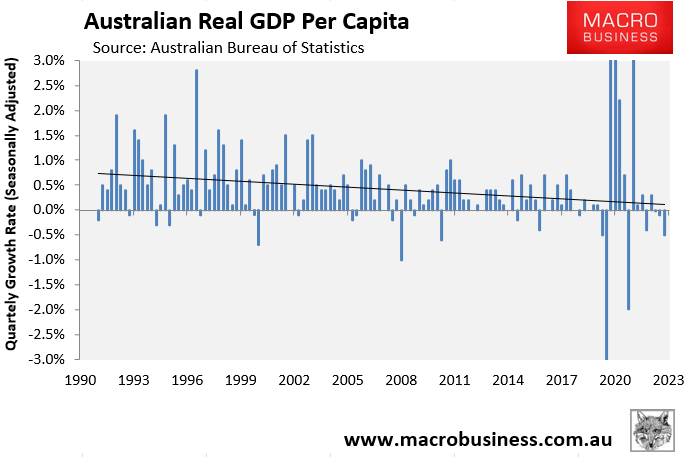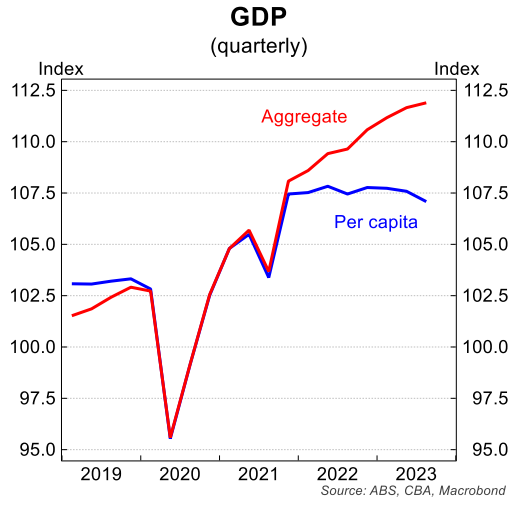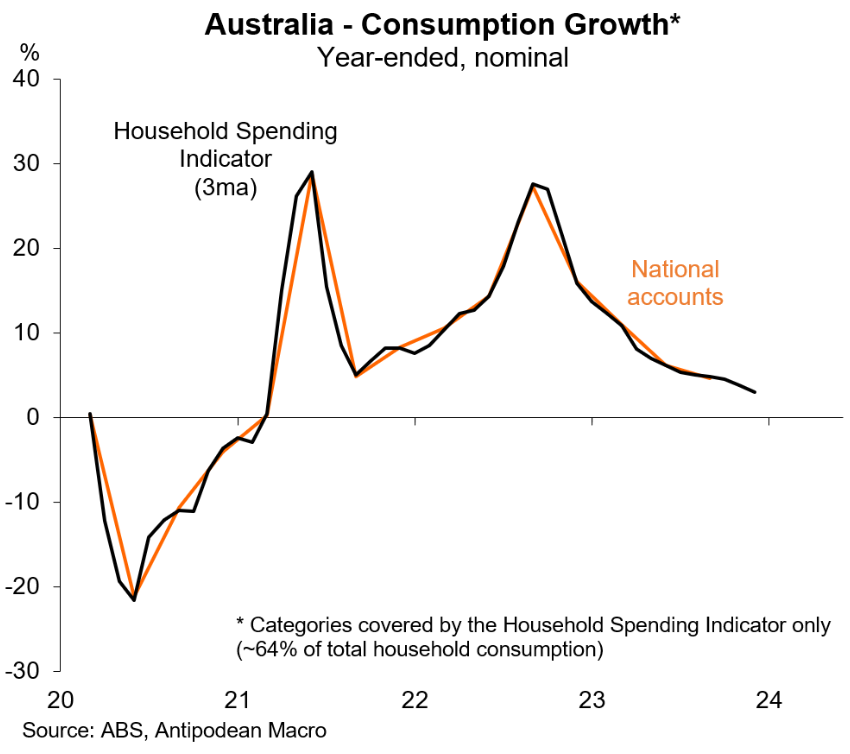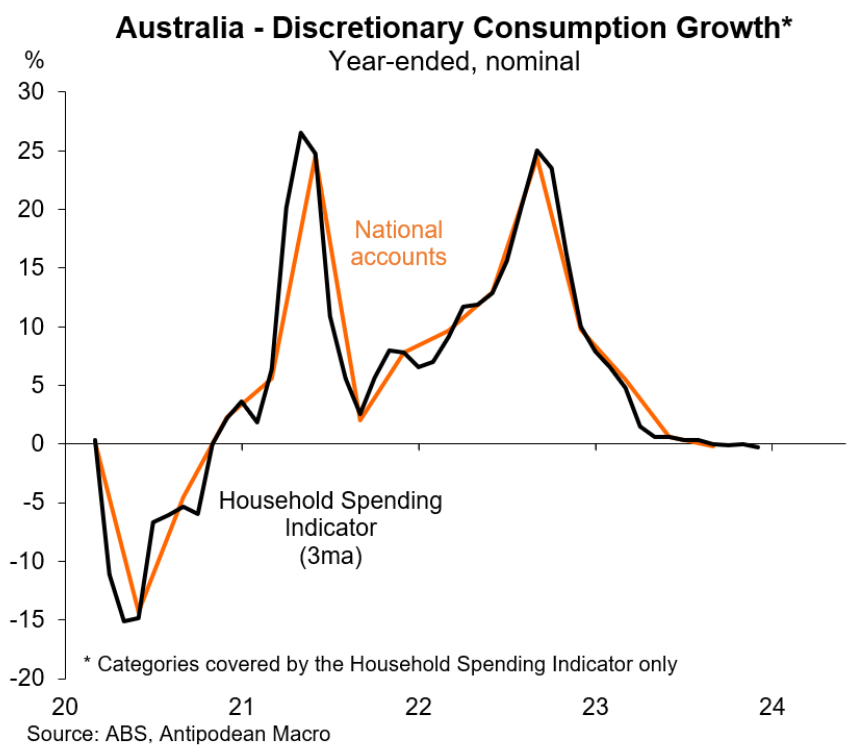The Australian Bureau of Statistics’ (ABS) September quarter national accounts revealed that the nation’s real gross domestic product (GDP) decreased for three consecutive quarters in per capita terms, falling 0.3% year on year:

This 0.3% annual decline in per capita GDP was caused by a 1.9% decrease in real per capita household consumption:

The Reserve Bank of Australia’s (RBA) latest Statement on Monetary Policy (SoMP) predicts that Australia’s per capita recession will continue through 2024, with aggregate GDP to rise by only 1.5% in the 2024 calendar year.
This implies that Australia’s per capita recession will run through 2024, given that the country’s population is forecast to expand by around 2% over the same time period.
Because of Australia’s record population growth, the overall economic pie grew moderately in the year to September 2023, but the average Australian’s share of the pie shrank:

The ABS released its monthly household spending index on Friday. According to Justin Fabo at Antipodean Macro, this points to lower household consumption and GDP growth in the December quarter.

Discretionary items have driven the drop in household consumption spending, as expected:

In particular, spending on goods has collapsed:

So, while Australia is unlikely to experience a ‘technical recession’ in 2024 due to historically high population growth (immigration), Australian households will remain in recession.
This comes after they witnessed the largest drop in living standards on record last year, with real per capita household disposable income falling by around 6% to about 2011 levels in the year to September, completely wiping out 12 years of gains.

Australia’s unemployment rate is also predicted to rise materially in 2024, maybe nearing 5% by the end of the year, adding to the suffering.

Consumer sentiment finished 2023 near recessionary levels, according to Westpac, and I don’t see much changing until the RBA starts an easing cycle in the second half.
The 2020s are shaping up as an even poorer decade for Australians than the “lost decade” of the 2010s.

